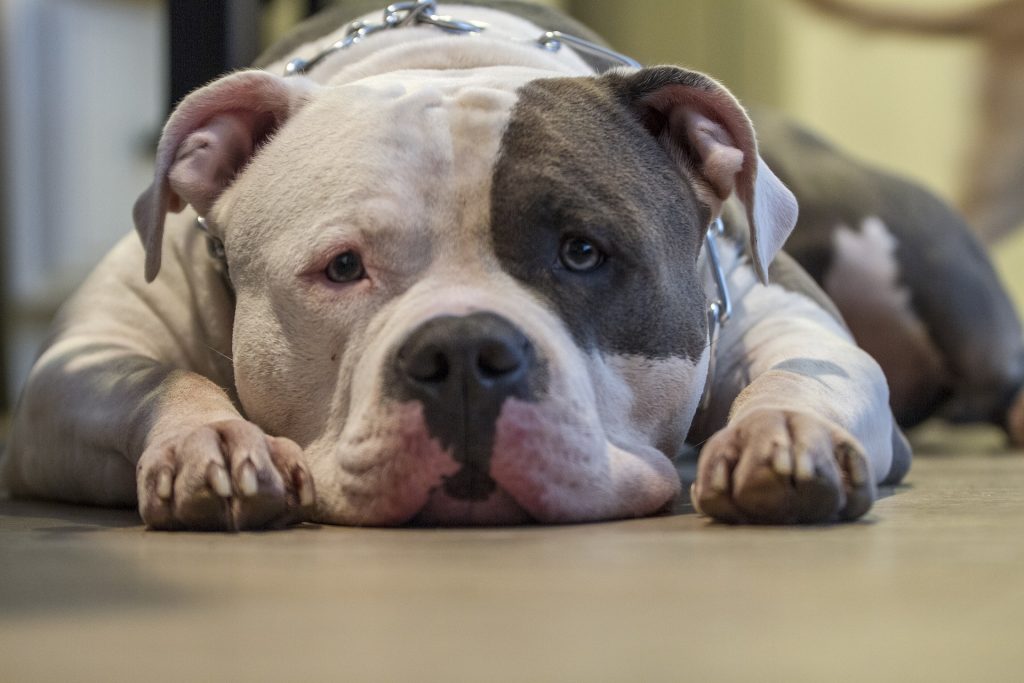Lauren Lee Freelance Writer & Blogger | Pet Content Writer | Animal Advocate & Rescuer
I am reading through numerous articles and clippings on Denver, Colorado’s lengthy and highly controversial pit bull ban in the midst of the mayor’s latest decision to veto the repeal on breed specific legislation. Pictures from the The Rocky Mountain News in 2005 show dogs being rounded up, forced onto trucks, and taken to their deaths. Other pictures show hundreds of dead dogs – likely many of the presumed 1,453 pit bulls Denver put to death in 2005 and 2006.
When Will Legislators Learn BSL is Not The Answer?
Clearly 1,453 pit bulls didn’t attack people in Denver in 2005 and 2006. So again, we have another example of humans attempting to wipe out an entire breed because of the actions of a few. Who are the real killers here?

For those unfamiliar with Breed Specific Legislation (BSL), it is a generalized term for laws that regulate or ban certain dog breeds, ostensibly to decrease dog attacks on humans and other animals. Such legislation targets specific breeds of dogs that are wrongly thought to all be dangerous – most frequently “pit bull types.” Those in favor of BSL say it is necessary to ensure the public’s safety, and argue that such legislation protects citizens from vicious and dangerous dogs.
BSL Does Nothing to Increase Safety
When it comes to protecting communities, people, and pets, legislation targeting specific breeds is ineffective. However, it is an effective means of spreading prejudice, stereotypes, and hatred. There are far too many problems with this type of legislation to have a safe outcome.
The name “breed-specific” legislation is incorrect. It is not breed specific but rather appearance specific, making it more like racism couched as legislated public protection. This is because BSL focuses on dogs with certain physical characteristics. The most obvious of these is a solid, muscular, body type, a large blocky head, wide-set shoulders, a large chest, and a rectangular-shaped body.
Studies have shown that even professionals who are most familiar with dogs are not reliably able to determine a dog’s breed. This is because the very physical traits that are used to define “dangerous and vicious” dogs are actually shared by many different breeds and mixed-breed dogs. And while pit bulls are the dogs most often targeted by this type of discriminatory legislation, the term pit bull does not refer to a breed of dog, but rather to a whole group of dogs.
Some organizations only recognize the American Pit Bull Terrier as the one true pit bull. However, they share similar features to other breeds, such as the American Staffordshire Terrier, Staffordshire Bull Terrier, Boston Terrier, several other terrier breeds, and some Bulldog breeds.
An article in Today.com notes, that “the term pit bull also has come to refer to dogs who simply look like they belong to one of those breeds even if they share no genetic connection.”
This is stereotyping regardless of what BSL supporters want to call it.
It Is Impossible To Identify A Dog’s Breed By Sight
The ASPCA has said that it is not possible to definitively identify a pit bull by sight. In any community that institutes BSL, and uses sight as a means of breed identification, members need to ask themselves the following: are you comfortable euthanizing dogs with no history of aggression simply because of the way they look?
To illustrate this, four Florida shelters took part in a 2012 study conducted by Maddie’s Fund. In this study, four staff members at each shelter identified the breed of 30 dogs in each shelter by sight. Of the total 120 dogs, shelter staff identified 55 as pit bulls by sight. The DNA analysis revealed that only 25 of the dogs were pit bulls. Twenty percent of the dogs whom the DNA analysis revealed were pit bulls were not identified as pit bulls by the shelter staff. Only 8% of the true “pit bulls” were identified as such by all participating shelter staff members.
This particular study’s authors concluded the following:
- Observer identification of breed was so inconsistent that visual identification of breed is unreliable.
- The safety of a dog is best evaluated by looking at the individual dog’s attributes, including personality, behavior, and history, not breed.
Another problem with BSL is that it tends to discriminate against responsible dog owners while failing to address the issue of irresponsible dog owners. The truth is a dog of any breed is more likely to display aggressive behavior if it is not supervised, not properly cared for, and has not received appropriate training and socialization.
The American Veterinary Medical Association describes socialization as the process of preparing a dog to enjoy interactions and be comfortable with other animals, people, places and activities.

Negative Consequences of Breed-Specific Legislation
Rather than promoting safer communities, breed-specific legislation ends up resulting in several unintended negative consequences to the health and safety of people and pets.
- Dogs may suffer while their owners attempt to prevent them from being detected by authorities. Rather than give up their beloved pets, even the most well-intended dog owners of targeted breeds may resort to restricting their dog’s outdoor activity, minimizing visits to the vet’s office, and doing without necessary shots, microchips, and spay and neuter procedures. The result is the dog receives less socialization, and consequently, the pet’s physical and mental well-being suffers.
- Irresponsible dog owners, on the other hand, who are likely to use dogs for purposes of fighting, attacking, and backyard breeding will move on to whatever breeds they can. Any dog can be trained to attack and fight if mistreated, starved, beaten, chained up, abused, and forced to fight for its life.
- Animal shelters and rescues are forced to kill larger numbers of healthy, adoptable dogs in cities and states where breed-specific laws make adopting and owning certain dogs virtually impossible.
- According to the U.S. Centers for Disease Control (CDC), more than 4.7 million people in the United States are bitten by dogs each year, and more than 800,000 receive medical attention for dog bites. But what proponents of Breed-ban Legislation leave out of this equation is the fact that any dog can bite, regardless of the dog’s size, breed, or a genetic mix of breeds.
Rather than spend money and resources targeting breeds with specific appearances, cities, and towns would be better advised to put funds and energy toward educational initiatives, subsidized puppy training classes, enforcing leash laws, low-cost spay/neuter programs, and regulation targeting irresponsible dog owners (irrespective of breed), dog breeders, and animal abusers.
The answer is not and never should be stigmatizing an entire group because of incidents involving a small number who happen to share the same physical characteristics.
Sources:
https://www.aspca.org/animal-cruelty/dogfighting/what-breed-specific-legislation
https://www.avma.org/public/Pages/Why-Breed-Specific-Legislation-is-not-the-Answer.aspx
https://www.avma.org/news/javmanews/pages/171115a.aspx
https://www.humanesociety.org/resources/breed-specific-legislation
https://www.avma.org/KB/Resources/Reference/AnimalWelfare/Pages/Socialization.aspx
https://www.maddiesfund.org/incorrect-breed-identification.htm
https://www.today.com/pets/what-pit-bull-it-s-not-actually-dog-breed-t118066
https://petradioshow.com/breed-specific-legislation-reasonable-public-policy-or-just-b-s/



Leave a Reply